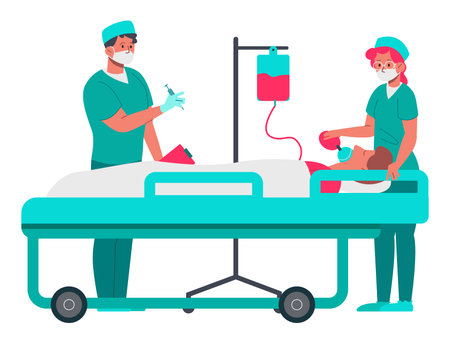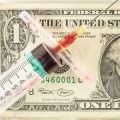Caring for Your Skin Immediately After Electrolysis
Electrolysis is a highly effective way to achieve smooth, hair-free skin, but proper aftercare is essential for the best results. In the first 24 hours after your treatment, your skin may feel sensitive and look a little red or swollen. Don’t worry—these reactions are totally normal and temporary. Here’s how you can take care of your skin right after electrolysis with gentle, dermatologist-recommended methods.
What to Expect Post-Treatment
Most people experience some mild redness, swelling, and tenderness in the treated area. These symptoms typically resolve within a day or two. The key is to be gentle and patient as your skin heals.
Top Tips for Reducing Redness and Swelling
| Aftercare Step | What to Do | Why It Helps |
|---|---|---|
| Cool Compresses | Apply a clean, cold washcloth or wrapped ice pack on the area for 5-10 minutes at a time. | Helps soothe irritation and reduce swelling. |
| Avoid Touching | Keep hands away from the treated area and avoid picking or scratching. | Prevents infection and reduces risk of scarring. |
| No Makeup or Heavy Creams | Let your skin breathe by skipping makeup, lotions, or creams for at least 24 hours. | Keeps pores clear and reduces irritation. |
| Mild Cleanser Only | Wash gently with lukewarm water and a fragrance-free cleanser. | Cleans without causing further irritation. |
| Avoid Heat & Sweat | Skip saunas, hot showers, and intense workouts for a day. | Minimizes swelling and keeps the area clean. |
Soothe Discomfort Naturally
- If you’re feeling discomfort, over-the-counter pain relievers like acetaminophen (Tylenol) or ibuprofen (Advil) can help. Just follow package directions.
- Aloe vera gel (pure and fragrance-free) is safe to dab on if you want extra soothing relief.
Specialist-Approved Quick Dos & Don’ts
- Do: Wear loose clothing over the treated area to avoid friction.
- Don’t: Use exfoliating products or scrubs until your skin has healed completely.
- Do: Stay out of direct sunlight, and use sunscreen if you need to go outside.
- Don’t: Go swimming in pools, lakes, or hot tubs within the first 24 hours.
Treat your skin with kindness right after electrolysis—gentle care now means smoother, healthier results later!
2. What to Avoid Post-Treatment
After your electrolysis session, taking care of your skin is key to getting the best results and avoiding unwanted side effects. There are certain activities, products, and habits you should avoid to help your skin heal smoothly and stay irritation-free. Here’s what you need to know:
Activities and Habits to Put on Hold
| What to Avoid | Why It Matters | How Long? |
|---|---|---|
| Sun Exposure | Your skin is more sensitive after treatment, making it prone to sunburn and hyperpigmentation. | At least 48 hours; use sunscreen if you have to go outside. |
| Heavy Workouts & Sweating | Sweat can irritate treated areas and increase the risk of infection. | 24-48 hours |
| Makeup Application | Cosmetics may clog pores or introduce bacteria, leading to breakouts or irritation. | 24 hours (especially on treated areas) |
| Tight Clothing | Friction can aggravate sensitive skin and slow down healing. | 24-48 hours |
| Touching or Picking at Skin | This can introduce bacteria and cause scarring. | Avoid until skin is fully healed |
| Pools, Hot Tubs, Saunas | Chemicals and heat may irritate skin or cause infection. | 48 hours or until redness subsides |
| Harsh Skincare Products (Retinol, Acids) | Active ingredients can sting or further sensitize your skin. | A few days; check with your electrologist for specific recommendations |
Everyday Products to Skip Temporarily
- Perfumed lotions and creams: Stick with gentle, fragrance-free moisturizers only.
- Exfoliants (scrubs or chemical peels): Wait until your skin has fully recovered before using any exfoliating products.
- Tanning products: Self-tanners and spray tans can react with irritated skin.
Your Healing Timeline in a Nutshell:
The first 24-48 hours are the most critical for aftercare. During this window, keeping things simple—gentle cleansing, cool compresses if needed, and minimal contact—is your best bet. If you’re ever unsure about an activity or product, ask your electrologist for personalized advice tailored to your skin type and treatment area.

3. Keeping Skin Clean and Hydrated
After electrolysis, caring for your skin is all about keeping it clean and hydrated without causing irritation or clogged pores. The right products and daily habits make a big difference in how quickly your skin recovers and how healthy it looks.
Choosing the Right Cleanser
Look for gentle, fragrance-free cleansers that are suitable for sensitive skin. Avoid harsh soaps, scrubs, or products with alcohol, as these can dry out or irritate freshly treated areas. Use lukewarm water when washing your face to prevent further sensitivity.
| Type of Cleanser | Why It Works | Popular Examples |
|---|---|---|
| Cream Cleanser | Mild and hydrating; helps retain moisture | Cetaphil Gentle Skin Cleanser, CeraVe Hydrating Cleanser |
| Micellar Water | No-rinse option; removes dirt without stripping skin | Bioderma Sensibio H2O, Garnier Micellar Cleansing Water |
| Gel Cleanser (for oily skin) | Lightweight; cleans without heavy residue | La Roche-Posay Toleriane Purifying Foaming Cleanser |
Finding a Suitable Moisturizer
Your skin may feel dry or tight after electrolysis, so moisturizing is key. Choose an oil-free, non-comedogenic moisturizer to avoid clogging pores. Look for ingredients like hyaluronic acid and ceramides that help repair and protect your skin barrier.
| Moisturizer Type | Main Benefit | Recommended Brands |
|---|---|---|
| Gel-Based Moisturizer | Lightweight hydration without greasiness | Neutrogena Hydro Boost Gel-Cream, Clinique Moisture Surge |
| Ceramide Creams | Restores protective barrier; great for dry or sensitive skin | CeraVe Moisturizing Cream, Eucerin Advanced Repair Cream |
| Aloe Vera Gel (for soothing) | Calms redness and irritation naturally | Fruit of the Earth Aloe Vera Gel, Seven Minerals Aloe Vera Gel |
Daily Tips for Healthy Post-Electrolysis Skin
- Wash Gently: Use fingertips instead of washcloths or sponges to minimize friction.
- Avoid Hot Water: Stick to cool or lukewarm water while cleansing.
- No Picking or Scratching: Let any redness or bumps heal on their own.
- Pat Dry: Gently pat your face dry with a soft towel after washing.
- Apply Moisturizer Immediately: Lock in moisture by applying cream right after cleansing.
- Sunscreen is Essential: Even if you’re indoors, protect treated areas with SPF 30+ to prevent dark spots.
- Avoid Heavy Makeup: Give your skin time to breathe for at least 24 hours post-treatment.
If You Notice Increased Redness or Irritation:
- Pause use of any new products introduced after treatment.
- Consult your electrologist or dermatologist if symptoms persist longer than 48 hours.
Your Takeaway:
The secret to smooth, glowing skin after electrolysis is a simple routine with gentle cleansers and hydrating moisturizers. Listen to your skin, choose non-irritating products, and you’ll enjoy beautiful results with minimal stress!
4. Recognizing Normal vs. Concerning Reactions
After your electrolysis treatment, it’s completely normal to wonder what kind of skin reactions you should expect and which ones might need extra attention. Here’s a simple guide to help you tell the difference between typical healing signs and symptoms that mean you should contact your provider.
What’s Normal After Electrolysis?
Your skin goes through a natural recovery process after electrolysis. Most people experience some mild side effects that fade away within a few days. These common reactions are part of how your body heals:
| Typical Reaction | What You Might Notice | How Long It Lasts |
|---|---|---|
| Redness | Pink or reddish skin in treated areas | A few hours to 1-2 days |
| Slight swelling | Puffiness around hair follicles | A few hours to 1 day |
| Tingling or sensitivity | Mild stinging or tightness | Up to 2 days |
| Tiny scabs or pinpoint crusts | Small spots where hairs were removed | 3-7 days (do not pick) |
When to Reach Out to Your Provider
While most reactions are harmless and temporary, there are a few signs that could indicate a problem. If you notice any of the following, don’t hesitate to call your provider for advice:
- Severe pain that doesn’t improve with time or gentle care
- Increasing redness, warmth, or swelling after the first day (could be a sign of infection)
- Pus, yellow drainage, or foul odor coming from treated areas
- Blistering or open sores instead of tiny scabs
- Signs of an allergic reaction like hives, itching beyond the treated area, or difficulty breathing (call 911 for serious allergic symptoms)
- Sustained darkening or lightening of the skin that lasts more than a few weeks
Quick Tip:
If you’re ever unsure whether your reaction is normal, it’s always okay to check in with your electrologist or healthcare provider. They’re there to support your healthy healing journey!
5. Maximizing Results and Long-Term Care
Keeping Your Skin Smooth Between Electrolysis Sessions
Maintaining healthy, smooth skin between your electrolysis appointments is key to getting the best results from your treatment. Here’s what you can do:
| Tip | What to Do | Why It Matters |
|---|---|---|
| Hydrate Daily | Drink plenty of water and use a gentle moisturizer every day. | Keeps your skin soft and helps with recovery. |
| Avoid Picking or Scratching | Let treated areas heal naturally—don’t pick at scabs or bumps. | Prevents infection and reduces the chance of scarring. |
| Use Sun Protection | Apply SPF 30+ on exposed areas, even on cloudy days. | Protects sensitive skin and prevents discoloration. |
| Skip Harsh Products | Avoid retinols, exfoliants, or strong acne treatments for a few days after each session. | Minimizes irritation and helps healing. |
| No Tweezing or Waxing | Only shave between sessions if needed—don’t pluck hairs. | Keeps hair follicles intact so electrolysis stays effective. |
Supporting Ongoing Hair Reduction and Skin Recovery
Your skin needs some TLC after each appointment. Try these strategies for long-term success:
Healthy Habits That Help
- Stick to Your Schedule: Consistency with appointments helps reduce regrowth faster.
- Eat Balanced Meals: A diet rich in vitamins A, C, and E can boost skin repair.
- Wear Loose Clothing: Choose breathable fabrics to avoid friction on freshly treated areas.
- Keep it Clean: Gently cleanse the area twice daily to keep bacteria away but skip scrubbing or hot water right after treatment.
- Mild Cold Compress: Use a clean, cold washcloth to soothe swelling or redness if needed (but never ice directly).
If You Notice Unusual Reactions…
If you experience anything like persistent redness, swelling, or pus, contact your electrologist or dermatologist. It’s better to ask than risk complications!
The right aftercare routine makes all the difference for lasting smoothness and healthy skin during your electrolysis journey. By following these tips, you’ll help your skin recover quickly and support the best possible results over time.


